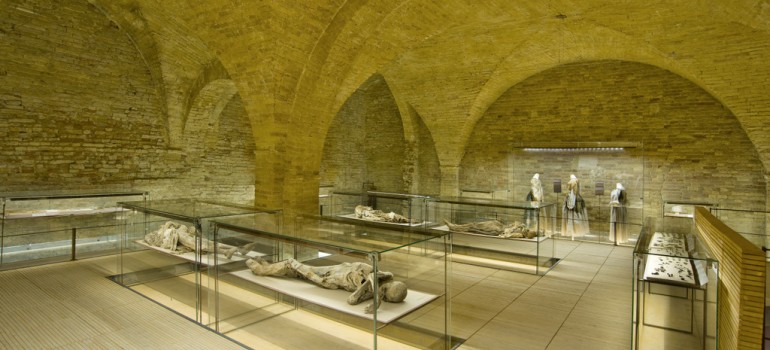
They were brought to light more than 20 mummified human bodies. Most of them are of mummies “natural” that the remains preserved for a spontaneous process of mummification; among these it was also observed a case of anthropogenic mummification obtained through a surgical procedure of evisceration. The climatic and environmental conditions are exceptionally allowed to preserve the bodies, but the clothes made from plant fiber. The examination of the clothes has highlighted, in addition to the variety of shapes related to a Class of Piceno, the extraordinary state of preservation of the textile fibers, hemp, linen and broom, usually undergo complete disintegration; clothes made from these fibers were characteristic of poor people, farmers, who had no chance to wear garments fabrics such as wool and silk, by contrast, usually they kept. Among the pieces found: women’s clothing, men’s vest, socks, caps, shirts. They are all very patchy, but at the same time full of details like buttons, precious lace and embroidery, a sign that the bodies were buried with their clothes but poor best, those of the party. The bodies were reassembled in the environments where they were found, in the chapel of the “Good Death” and in the adjacent crypt. In these beautiful spaces it was set the story of the discovery and study and you can look past the mummified bodies, clothes, fabrics, rosaries, medals, rings and all the items found during the archaeological excavation.
Opening times:
From July 11 to Sept. 13, 2015 – Monday / Saturday from 10.00 to 13.00 and from 16.00 to 19.00; Sunday from 16.00 to 19.00.
Altri monumenti a Monsampolo del Tronto
 Lascia un commento
Lascia un commento